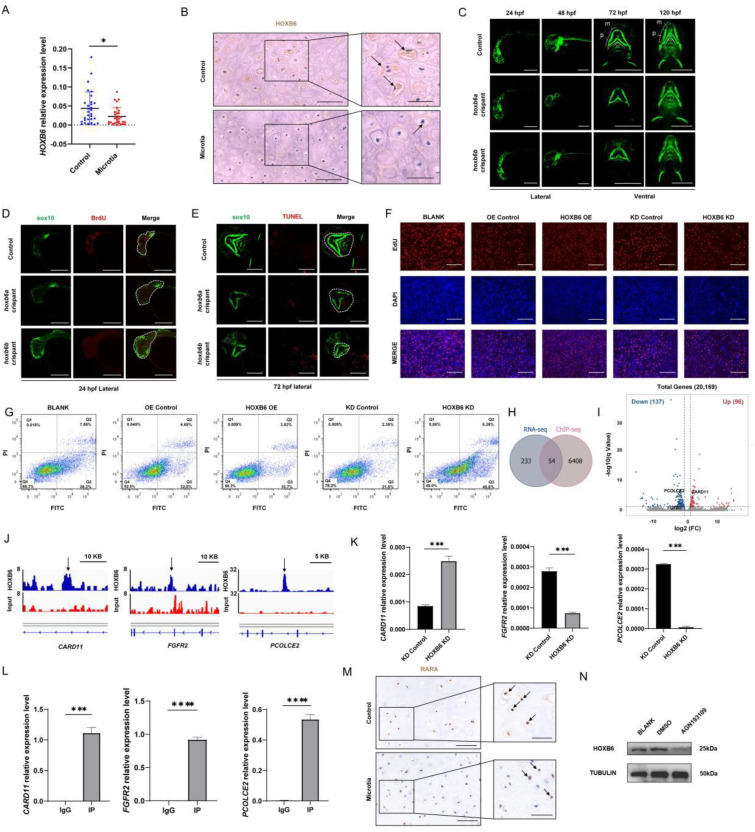
HOXB6 down-regulation induced by retinoic acid pathway repression leads to chondrocyte proliferation inhibition and apoptosis in microtia


Microtia, a congenital malformation affecting the external and middle ear, arises from disruptions during the development of embryonic branchial arches and cranial neural crest cells (CNCCs), making it the second most prevalent maxillofacial birth defect and a leading cause of conductive hearing loss.1 Aberrant gene expression is pivotal in microtia pathogenesis by influencing chondrocyte activities. Homeobox (HOX) genes stand out as regulators for proper skeletal patterning, and mutations within the HOX family have been implicated in microtia.2 Our transcriptomic microarray analysis of microtia revealed a substantial reduction in HOXB6 expression in auricle cartilage.3 HOXB6, known for its crucial involvement in embryonic axis determination, when expressed ubiquitously in transgenic mice, resulted in microtia. However, the specific role of HOXB6 in microtia remains elusive. This study validates the down-regulation of HOXB6 in auricle cartilage obtained from microtia patients. We also postulate that the decrease observed in HOXB6 expression levels, resulting from a reduction in retinoic acid (RA) pathway signaling, triggers the inhibition of chondrocyte proliferation and the promotion of apoptosis by directly governing the expression of targeted genes related to these cellular behaviors. This action leads to a decrease in the overall chondrocyte population, contributing to the phenotypes observed in microtia patients.
